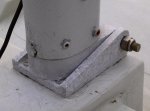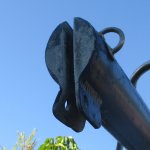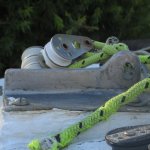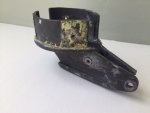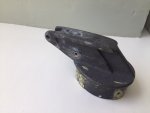Corribee Boy
Well-known member
The mast heel or foot on my boat's suffered a bit over the years. It's structurally sound when in compression so it's fine to use, but it has tangs extended aft to form a pivot point that will raise the base of the mast to clear the coachroof when it's being lowered. These tangs are distorted and cracking.
It's an unknown alloy cast to a fairly simple form, and I was hoping to find someone to weld the cracks and build up the alloy, but seem to have drawn a blank unless I'm prepared to spend half the value of the boat. Things like JB Weld might be possible but the consequence of failure when raising the mast makes me nervous.
Does anyone know anyone who carried out this sort of welding work for reasonable money? Is it even possible? Alternatively, with time on my hands and a reasonable workshop, I could either work a billet of suitable alloy to shape, or even carry out a casting. Does anyone know the type of alloy that would be suitable for this purpose?
It's an unknown alloy cast to a fairly simple form, and I was hoping to find someone to weld the cracks and build up the alloy, but seem to have drawn a blank unless I'm prepared to spend half the value of the boat. Things like JB Weld might be possible but the consequence of failure when raising the mast makes me nervous.
Does anyone know anyone who carried out this sort of welding work for reasonable money? Is it even possible? Alternatively, with time on my hands and a reasonable workshop, I could either work a billet of suitable alloy to shape, or even carry out a casting. Does anyone know the type of alloy that would be suitable for this purpose?

